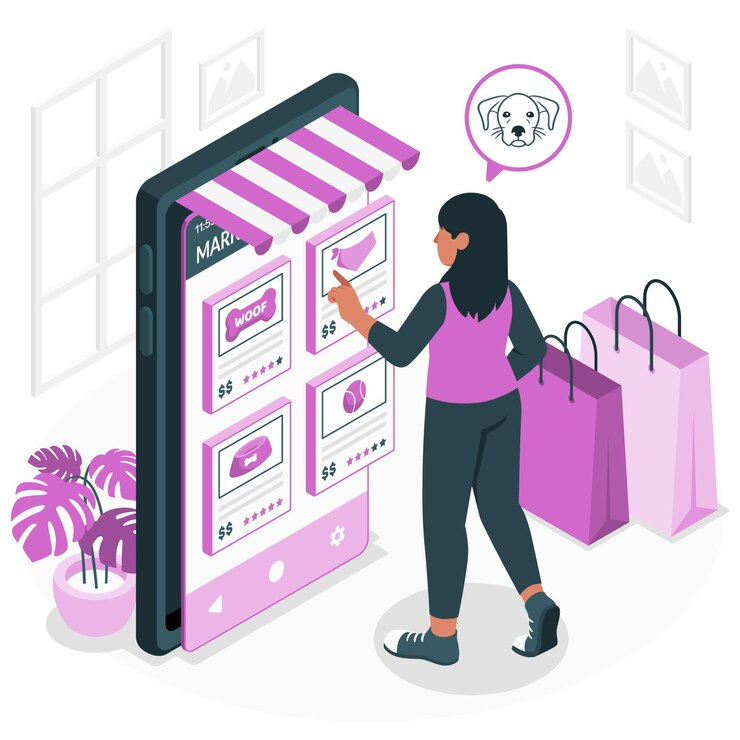The landscape of app development has evolved significantly, allowing individuals without technical backgrounds to create fully functional apps. With the rise of no-code platforms, developing an app has become more accessible, quicker, and cost-effective. This detailed guide will walk you through developing an app without coding in 2024, using the best mobile app builder, from the initial idea to deployment.
What is No-Code Development?
Understanding No-Code Platforms
No-code development platforms provide user-friendly, visual interfaces that enable users to design and build apps through drag-and-drop elements. These platforms abstract the complexities of coding, making app development possible for non-technical users.
Benefits of No-Code Development
No-code development offers several advantages:
- Speed: Rapid prototyping and faster development cycles.
- Cost: Reduced development costs as hiring expensive developers is unnecessary.
- Accessibility: Empowering non-technical users to create and manage their apps.
- Flexibility: Easy updates and iterations without the need for extensive rework.
Planning Your App
Define Your App's Purpose
Before diving into the development process, it's crucial to clearly define the purpose of your app. Ask yourself:
- What problem does my app solve?
- Who is my target audience?
- What are the key features and functionalities required?
Research and Competitor Analysis
Conduct thorough research to understand the market and analyze your competitors. Identify their strengths and weaknesses to determine how your app can offer a unique value proposition.
Create a Wireframe
A wireframe is a visual blueprint of your app's layout and structure. It helps you map out the user interface and user experience (UI/UX) before starting the actual development. You can use tools like Sketch, Figma, or even pen and paper to create your wireframe.
Choosing the Right No-Code Platform
Popular No-Code Platforms
There are several no-code platforms available, each with its strengths and features. Some of the most popular ones include:
- Bubble: Known for its flexibility and powerful backend capabilities.
- BoonApps: Ideal for building visually appealing mobile apps with ease.
- Thunkable: Great for building both Android and iOS apps simultaneously.
- Glide: Perfect for transforming Google Sheets into fully functional apps.
Evaluating Platforms
When choosing a no-code platform, consider the following factors:
- Ease of Use: How intuitive is the platform for beginners?
- Features: Does the platform offer the features you need for your app?
- Integrations: Can it integrate with other tools and services you use?
- Support: What kind of customer support and community resources are available?
Building Your App
Setting Up Your Account
Once you've selected a platform, sign up for an account and explore the dashboard. Familiarize yourself with the tools and resources available.
Designing the User Interface (UI)
Choosing a Template
Most no-code platforms offer a variety of templates to get you started. Choose a template that closely matches your app's purpose and customize it to fit your needs.
Customizing Elements
Use the platform's drag-and-drop interface to add and customize elements such as buttons, text fields, images, and forms. Pay attention to the overall design and user experience to ensure your app is intuitive and visually appealing.
Adding Functionality
Defining Workflows
Workflows define how your app responds to user interactions. For example, when a user clicks a button, what happens next? Use the platform's workflow builder to create these interactions and define the logic behind them.
Integrating APIs
If your app requires external data or services, you can integrate APIs (Application Programming Interfaces) to fetch and display this information. Most no-code platforms provide built-in integrations with popular APIs or allow you to connect custom APIs.
Testing Your App
Functional Testing
Test all the features and functionalities of your app to ensure everything works as expected. Check for any bugs or issues that need to be addressed.
User Testing
Get feedback from potential users by sharing a beta version of your app. Use their feedback to make improvements and refine the user experience.
Deploying Your App
Publishing to App Stores
Once your app is ready, you can publish it to the Apple App Store and Google Play Store. Follow the platform's guidelines for submission and ensure you comply with all the requirements.
App Maintenance and Updates
After deployment, continue to monitor your app's performance and gather user feedback. Regularly update your app to fix bugs, add new features, and improve the overall user experience.
Advanced Tips for No-Code Development
Leveraging Community Resources
Many no-code platforms have active communities where users share tips, templates, and solutions to common problems. Engaging with these communities can provide valuable insights and support as you develop your app.
Automating Workflows
Consider using automation tools like Zapier or Integromat to streamline workflows and integrate different apps and services. This can save you time and enhance the functionality of your app.
Scaling Your App
As your app grows, you might encounter limitations with your no-code platform. Plan for scalability by understanding the platform's constraints and knowing when to transition to more advanced development solutions if needed.
Case Studies: Successful No-Code Apps
Health Tracker
A health tracking app built using Adalo, enabling users to monitor their daily activities, diet, and health metrics. The developer utilized Adalo's pre-built components and API integrations to create a seamless user experience.
Local Business Directory
A local business directory app created with Glide, using Google Sheets as the backend. The app allows users to search for businesses, view contact information, and read reviews. The developer leveraged Glide's templates and customization options to build the app in a matter of days.
Conclusion
Developing an app without coding is practical and efficient in 2024. No-code platforms make app development accessible to anyone. This guide helps you turn your app concept into reality, from planning to deployment. For e-commerce, a Shopify mobile app builder simplifies integration with your store. Embrace no-code development, stay engaged with users, and keep improving your app for success.






Comments